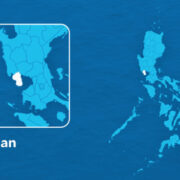What rising credit risk in banks means for investors

In finance, what you measure often shapes what you see. When assessing risk, it’s easy to focus on the visible, like fluctuations in earnings, balance sheet ratios or headline growth stories. But real financial trouble often builds up quietly until it becomes too big to ignore.
Last week, we explored how many listed companies on the Philippine Stock Exchange (PSE) are beginning to show signs of distress using a tool that detects early warnings of financial trouble called the Altman Z-score. While it works well for traditional companies with inventories, receivables and physical assets, it tells us little about banks.
This is because the business model of banks hinges on leverage and credit intermediation. Banks don’t sell products. They price risk. To assess their vulnerabilities, we need to look where that risk is accumulating.
One forward-looking tool that we can use to assess risk in banks is the IFRS 9, which was introduced in 2018. This standard, formally known as the International Financial Reporting Standard 9, governs how financial instruments are recognized, measured and how credit losses are accounted for.
Unlike previous accounting standards that only recognized losses once a loan had defaulted, IFRS 9 requires banks to estimate and book expected credit losses early on, using a three-stage classification system that tracks changes in a borrower’s credit quality over time.
For example, loans that are performing well and show no significant increase in credit risk since origination are considered low-risk and are classified under Stage 1. In this stage, banks set aside provisions based only on potential losses over the next 12 months.
Loans are moved to Stage 2 when they are still performing but show signs of increased credit risk. This may be due to a borrower’s weakened cash flow or a breach of loan covenants. While the borrower has not defaulted, the probability of loss has increased. As a result, banks must set aside higher provisions.
When loans cross the threshold into non-performance, they are classified under Stage 3. At this point, the bank recognizes that losses are likely, which often leads to write-downs and more aggressive recovery efforts.
Now, to get a clearer picture of credit stress in the banking sector today, we reviewed the financial disclosures of 10 of the largest listed banks on the PSE. These include BDO, BPI, Metrobank, Chinabank, PNB, RCBC, Security Bank, UnionBank, EastWest and Asia United Bank, and then we compared their data from 2019 to 2024.
In 2019, the sector’s median Stage 2 exposure was 5.29 percent of gross loans. By 2024, it declined to 4.10 percent, which indicates stronger credit-risk controls in the industry. However, if we look closer at year-on-year data, we find that seven of the 10 banks, or 70 percent of the sample, recorded an increase in Stage 2 exposures between 2023 and 2024.
Two scenarios could explain this rise in Stage 2 exposures. One possibility is reclassification. Some Stage 1 loans may have deteriorated and moved into Stage 2. This reflects early signs of weakening credit quality.
The other scenario is the denominator effect. While the percentage of Stage 2 exposure increased, the total peso amount actually declined. This contraction in the loan base may indicate weaker credit demand or tighter lending conditions, both of which may suggest growing caution in the banking sector.
Meanwhile, the risk trend becomes more evident when we look at Stage 3 loans. In 2019, the median Stage 3 exposure of the sector was 1.56 percent of gross loans. By 2024, this had risen to 2.07 percent.
While this is not catastrophic, it signals that more loans are entering nonperforming territory, possibly due to pandemic hangovers, inflationary pressures, or a high-interest rate environment. In credit risk, timing is key, since today’s Stage 2 often leads to tomorrow’s Stage 3.
This slow erosion in credit quality would be less concerning if profitability remained strong. But here, too, the numbers offer little comfort. The median Return on Assets of the sector declined from 1.3 percent in 2019 to 1.25 percent in 2024, return on equity (ROE) also dropped, from 10.4 percent to 9.9 percent.
This drop is not uniform, but it remains meaningful—especially since half of the banks in the sample now fall below the median on both measures. The fall in ROE, in particular, shows that although banks remain profitable, they create less value for shareholders compared to prepandemic levels.
This trend aligns with market valuations. A quick look at the sector’s price-to-book value (PBV) ratios shows that the median PBV also fell from 0.87 in 2019 to 0.71 in 2024.
For investors, these signs should not be ignored. Credit risk is rising slowly while profits are getting weaker. While there’s no sign of a crisis, the numbers suggest that conditions are becoming less stable. This is a time for caution. Instead of focusing only on profits, investors should look at how each bank manages risk, protects loan quality and delivers long-term value.





















